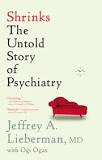And so many cheesy movie trailers began with, "In a world where . . . "
So try to imagine a world where Google, Facebook, Twitter, LinkedIn, YouTube, Yahoo, AOL, electronic health records, Ancestry.com, SnapChat, every election board, Etsy, Pinterest, Microsoft, Apple, WeChat, MeerCat, Tinder, Reddit, yadda, yadda, yadda were all a single company.
The Circle.
Imagine every aspect of social media and mobile computing under one umbrella. Gobbling up startups almost daily. Making everything transparent. As Eggers puts it, "a gateway to the world's information."
Everything.
Mae Holland spent her first couple years after college as a utility company drone in her small town California home. Ann, her college roomie, works for The Circle and responds to Mae's request for help getting a job with The Circle. Ann deals with regulatory stuff here and abroad while serving as a member of the Gang of 40, the drivers of much of the decision-making.
But the real drivers are the 3 Wise Men - the software engineer, the CEO, and the CFO. They have created The Circle as a way for individuals to connect and open up full transparency for the greater good. The campus, near San Francisco, is a massive monument to The Circle, employing thousands.
All Circle users are connected and all data is kept, forever. Therefore, all data is available for anyone. Everyone is invited to join interest groups, fill in surveys, connect with customers, respond to any and all queries, post thoughts and respond to other's comments (and woe to those who don't respond quickly. All those connections will wonder what's wrong). The more connections the better and each employee is ranked according to the number of connections, how their work is scored by their customers, everything.
A modern day Utopia.
One night, Mae drives home from seeing her parents when, in a spur of the moment impulse, pulls into a kayak rental place she frequents. It's closed, but a late returning customer left a kayak at the gate, so Mae takes off for a night paddle . . . and one of video feeds that a Circler placed picks up her midnight excursion.
Worse, Mae failed to post any thoughts about her adventure; it was a private moment for her. But one of the 3 Wise Men, Eamon Bailey, sees this as a selfish act denying other kayakers around the world the benefit of her experience and convinces Mae to start wearing a small camera that transmits her every act. It's a roaring success. Mae's rankings skyrocket. A Congresswoman pledges to go fully transparent and wears a camera. No back room deals now. Don't want your meeting with her recorded? Must not need the meeting.
And it mushrooms. Before long, thousands of local, state, and national politicians go fully transparent. Those that don't? Obviously hiding something, so forget reelection. And for a fully transparent nation to function efficiently, everyone has to vote. And to vote, you have to have The Circle software, make that required. Election results in seconds.
Eggers presents this cautionary tale of social media taken to the extreme. Individuals connect only via a digital interface - "one account, one identity, one password, one payment system, per person." Circlers are more interested in a comment or a smiley face from Cape Town or Delhi than to hold the hand of a real flesh and blood human. The employees of The Circle are its best representatives having fully drunk the proverbial Kool-Aid and convinced themselves that they are living a fascinating life. The mantra of The Circle becomes:
SECRETS ARE LIES
SHARING IS CARING
PRIVACY IS THEFT
Be careful what you wish for. Everyone will know. And that's a good thing, right?
ECD









